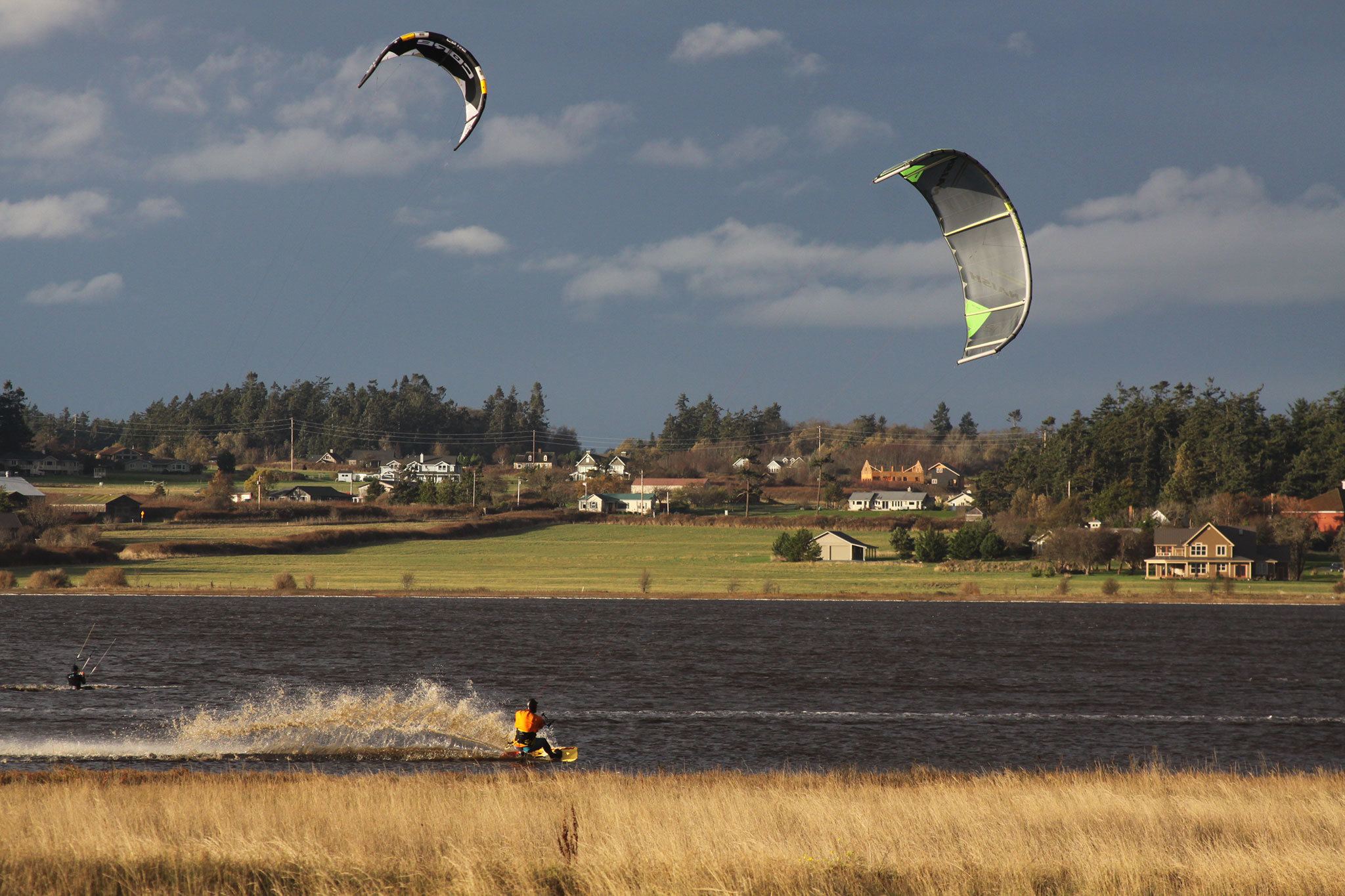One observation during Whidbey Island’s windy weekend was that a drop in temperature doesn’t mean a drop in outdoor recreation.
At least two groups of kiteboarders converged on Crockett Lake near Coupeville Saturday and Sunday, lured by strong southerly winds, serving as a reminder that wintry weather sometimes serves up ideal outdoor recreation conditions.
As the temperatures continue to sink in the coming months, some resident outdoor enthusiasts take solace in one simple fact about the late fall and winter seasons — they get the hiking trails, beaches and amenities at state parks mostly to themselves.
“There’s no bad weather, just bad clothing,” Govinda Rosling, a birder from Clinton and member of the Whidbey Audubon Society, once said.
Birding is still a premier outdoor pastime during the blustery months on Whidbey.
Raptors can be abundant and certain ducks, shorebirds and loons are here only during the chilly time of year.
Whidbey is located in the Pacific Flyway, a north-south migration path for birds. In the fall and winter, a variety of birds arrive from Alaska, British Columbia and other northern reaches, and in some cases, it’s the only time to see those species on the island.
“It’s a fabulous birding time,” Coupeville’s Sarah Schmidt said.
Whidbey Audubon offers monthly guided field trips for the public through the winter, including one Saturday on Admiralty Inlet birds that includes a ferry ride from Coupeville to Port Townsend.
When bundled up in layers, it also can be a good time to hit the trails and take in the scenic beauty with mountains painted a little more white.
Hiking trails are less crowded this time of year yet hikers should be mindful to use trails at state parks until deer hunting season is over next month.
The general season for black-tailed deer hunting resumes Thursday and wraps up Sunday on designated Island County and private lands where it is permitted. Hunting deer with muzzleloaders and bows will start next week and go until mid-December.
“Hunting is a recreational opportunity but, especially on the island, it’s a popular management tool to help manage the deer population, which is high,” said Ralph Downes, enforcement officer with the state Department of Fish and Wildlife who’s also a Whidbey resident. “The largest taker of deer on Whidbey Island is still by far the automobile.”
There also are some limited opportunities for waterfowl and pheasant hunting on designated properties and private land on the island, Downes said.
But if you just want to spot wildlife, this is the window of opportunity to see a Southern Resident Orca.
The best vantage point is Admiralty Inlet on Whidbey’s west side as resident orcas travel from the San Juans into Puget Sound to feed on migrating salmon from October through December.
Their population is in trouble, however, down to just 80 whales.
The most common of the orca whales to see are the transients, which feed on marine mammals and can be spotted around Whidbey at any time of the year.
• CHILLING RESULTS: Fort Casey State Park’s new fundraiser turned heads again.
Nearly 2,000 people attended the two-day Haunted Fort last month, about 500 people more than the event’s first year.
The gun emplacements at the former World War I-era Army post were turned into a house of horrors, and a large section was reserved for carnival-style games and ghost stories for younger kids.
“I think it went excellent,” said Sharon Sharpe, a program specialist for Central Whidbey State Parks.
More than 100 volunteers helped each night.
Forty-percent of the guests came from off-island, Sharpe said.
• CELEBRATE BOWMAN BAY: The public is invited to celebrate the completion of a two-year nearshore project at Bowman Bay in Deception Pass State Park from 2:30-4 p.m. Thursday.
The free event is hosted by the Northwest Straits Foundation, Skagit County Marine Resources Committee and Washington State Parks.
About 500 linear feet of rock was removed and the beach was restored to a more natural state.


